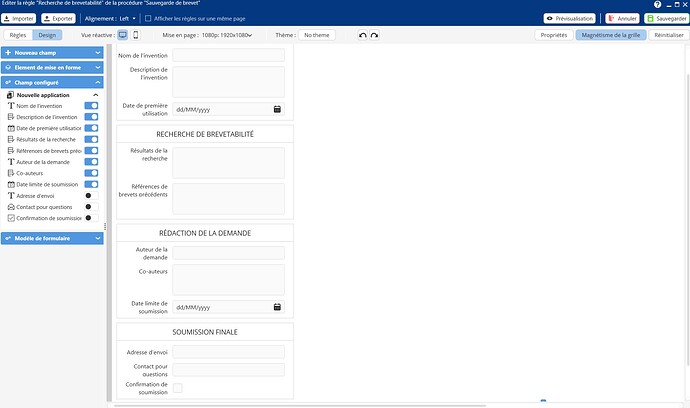Global Form: Less Maintenance, More Consistency
Creating a different form for every task? It works — but it quickly becomes time-consuming.
With global forms, ROK offers a smarter way: a single centralized form shared across multiple validation steps, editable in just one place.
 Why use a global form?
Why use a global form?
In a classic application:
- Each task has its own separate form.
- If you need to rename a field or change its layout, you have to do it for every task.
- This becomes hard to maintain, especially in multi-step workflows.
![]() The global form lets you build a single form at the app level, then reuse it across all tasks.
The global form lets you build a single form at the app level, then reuse it across all tasks.
Result: perfect consistency and a lot less maintenance!
 Two types of global forms
Two types of global forms
In a typical scenario (e.g., HR request or contract validation), you can:
- Create a data entry form with all the required fields.
- Create a read-only validation form, with comment zones for reviewers in later steps.
These two versions are linked, but tailored to the user’s role at each stage.
 Where to find it? How to use it?
Where to find it? How to use it?
- In the task rule editor, select “Global Form” under form rules.
- Design your form in the standard Form Designer.
- Use visibility rules to hide certain fields depending on the step.
![]() Any changes made to the global form are automatically reflected in every task that uses it.
Any changes made to the global form are automatically reflected in every task that uses it.
One change → multiple screens updated.
 Key takeaways
Key takeaways
- Centralization = time savings.
- Better readability across the entire workflow.
- Clearer business logic, fewer display errors.
